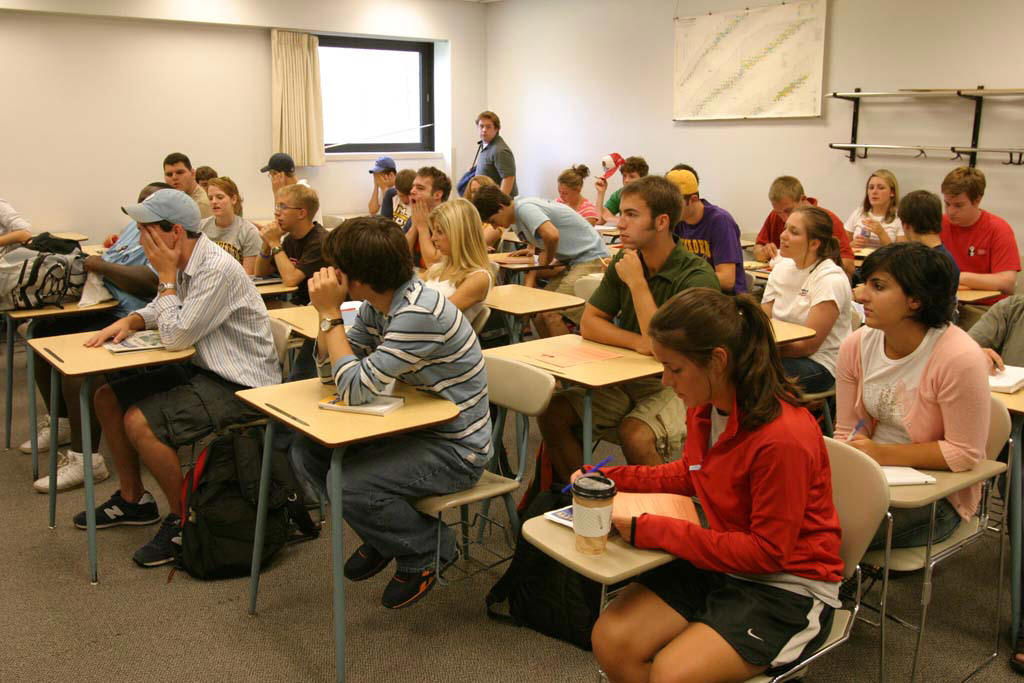Would you buy a used car
From these people?
Wally World has a minor supporting role at the bottom.
When multiple people express the same values on a given subject, they are commonly referred to as a "TEAM".
There are "Positive Teams". (WINNERS)
There are "Negative Teams". (LOSERS)
This page is to point out a Negative Team who's mission is to sell the American people a "LEMON". (Warren Commission Report)
Below are photos from the Internet of some of that team
Only one of them had the Guts to debate someone of a Different View (Much to his Regret) SEE>>> http://whokilledjfk.net/radio_debate.htm
Great critique of McAdams HERE>> www.prouty.org/mcadams
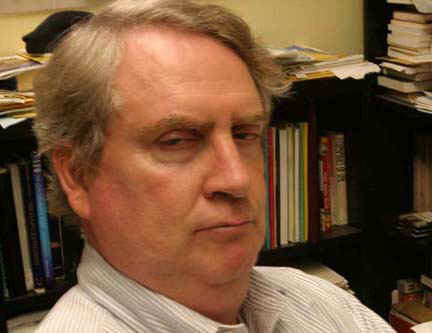

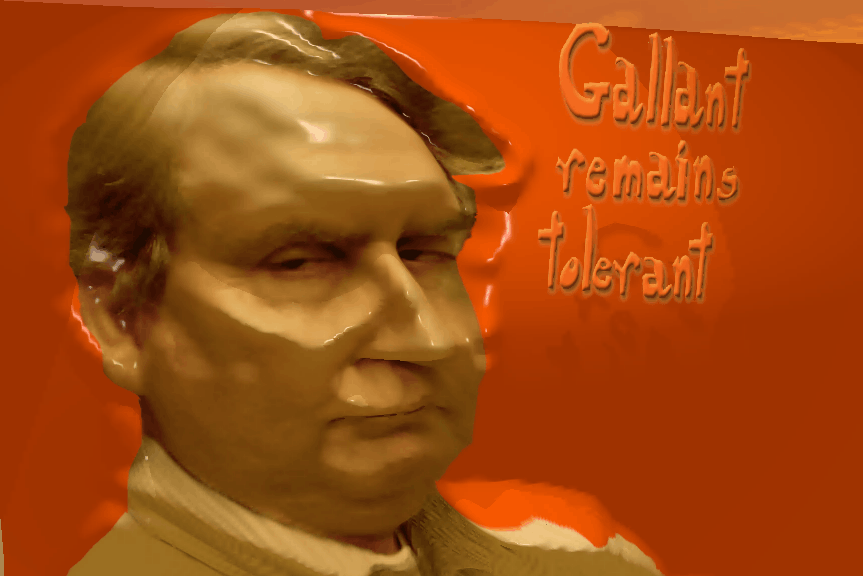

Above could be either john M CAdams OR, Paul Nolan SEE>>> http://whokilledjfk.net/frick.htm
Scripture tells us that when one comes to conclusions BEFORE gathering the facts is a "FOOL".
WHICH DESCRIBES JOHN MCAdams. FOR HE HIMSELF ADMITTED THAT HE DOES "NOT" HAVE THE 26 VOLUMES OF EVIDENCE/TESTIMONY.
.PLUS; WHEN A STUDENT PAYS THOUSANDS OF DOLLARS PER YEAR TO ATTEND A UNIVERSITY , THEN, GETS TAUGHT LIES, I THINK WE MAY BE TALKING ABOUT A "FELONY" ! ! !
Google describes a "PHD" as one who Is a" doctor of philosophy".
McAdams has somehow turned that accolade INto "piled higher and, deeper" ! ! !
McAdams HAS DONE TO EDUCATION WHAT DR. kOVORKIAN DID TO MEDICINE.
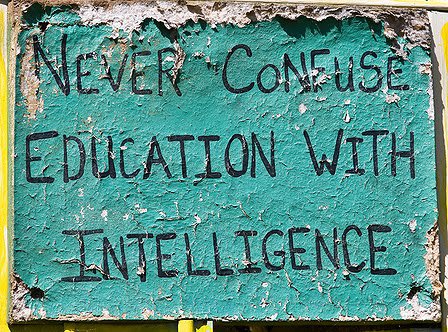
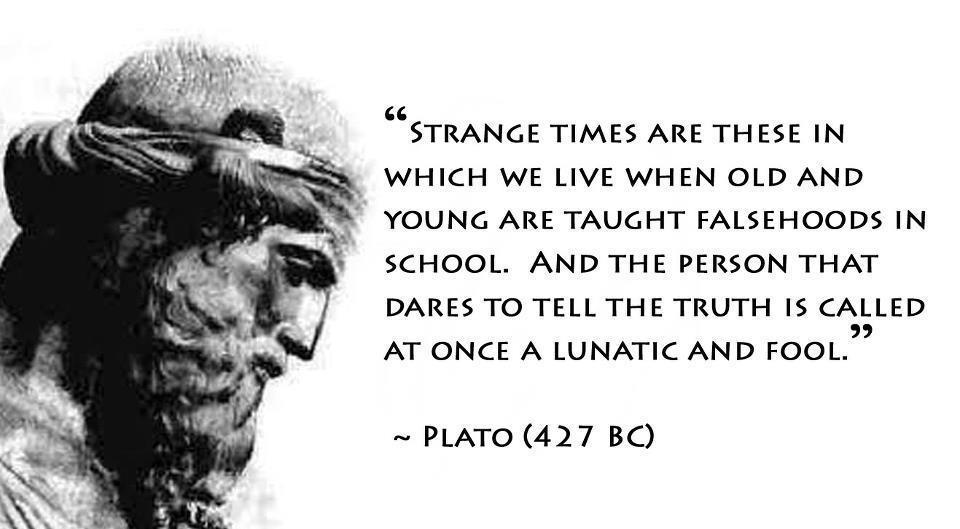

Above could be ken rahn SEE>>> http://whokilledjfk.net/frick.htm
Below is what I refer to as "The Bopsie Twins".
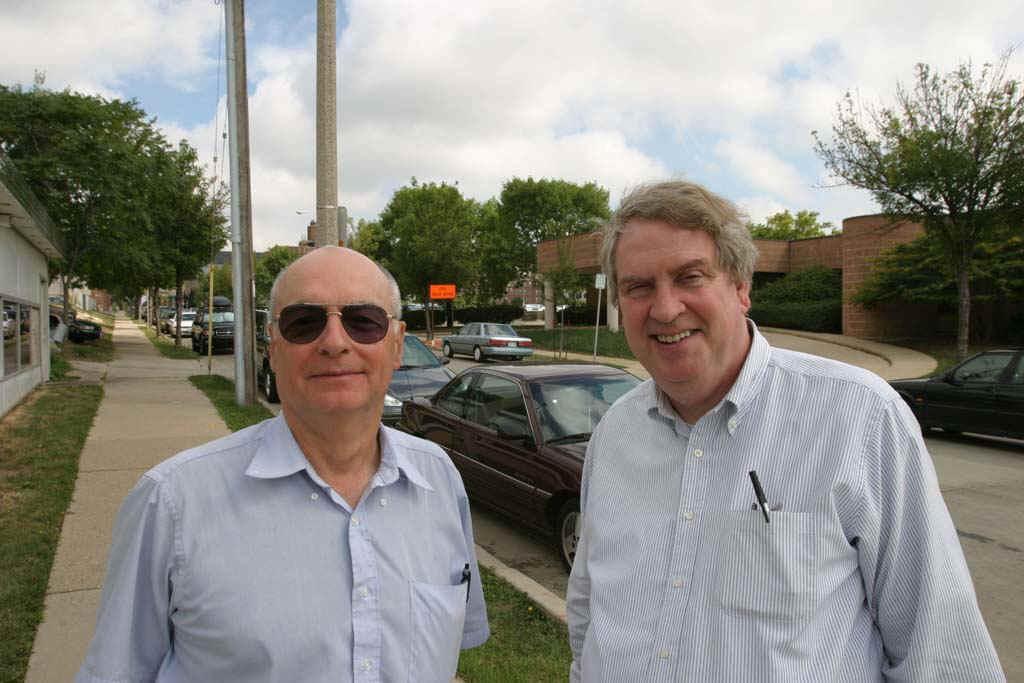
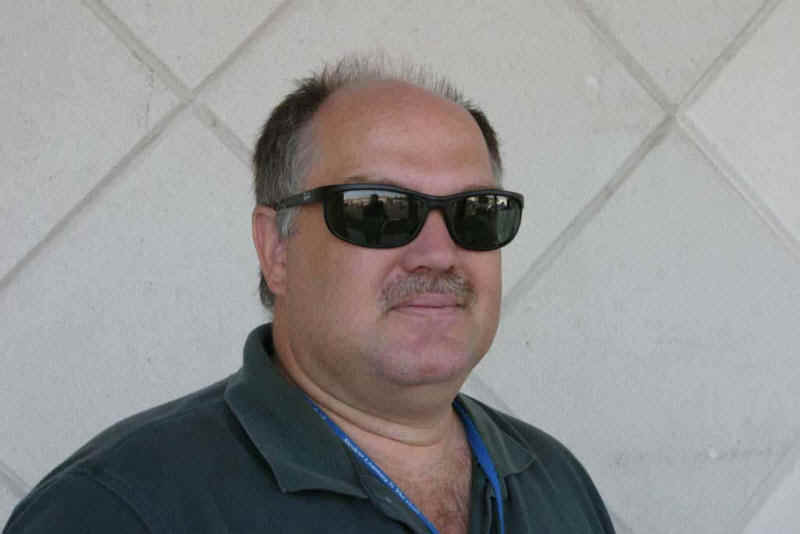
Above cold be rob, tim, Azcue, justme OR, HUGO Married/Single http://whokilledjfk.net/rob_spencer_page.htm
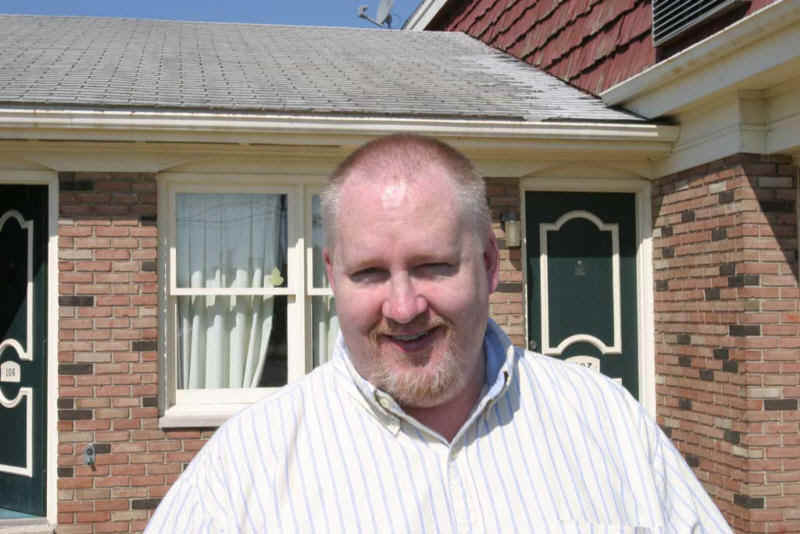
Above could be a Rock 'n Roll Drummer SEE>>> http://whokilledjfk.net/law_suits.htm
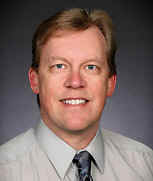
Charles
Schuyler
Home
Mortgage Consultant
Office: 651-205-5282
Contact
Us
Directions
Above looks like one who would "Foreclose" on American Seniors Mortgages
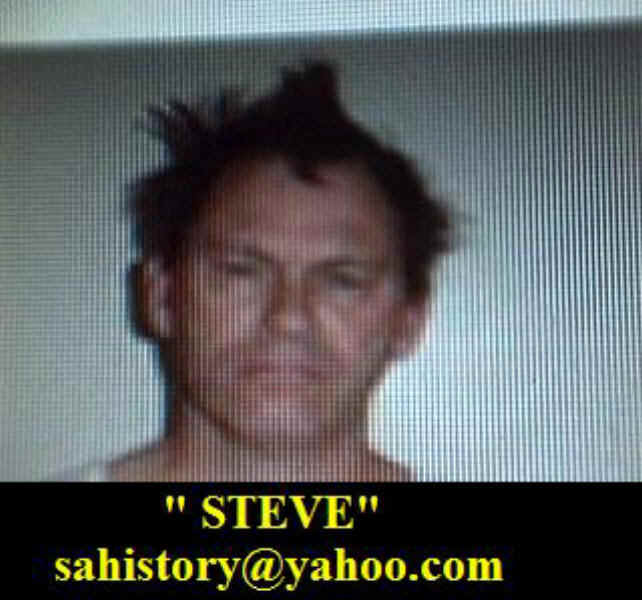
Above looks like a "Mugg Shot"
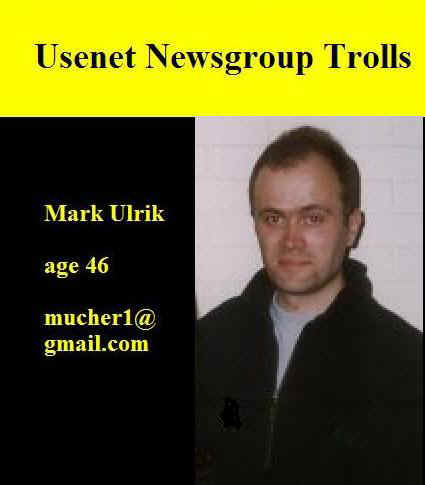
Above looks like a Russian Sailor from a Russian Trawler
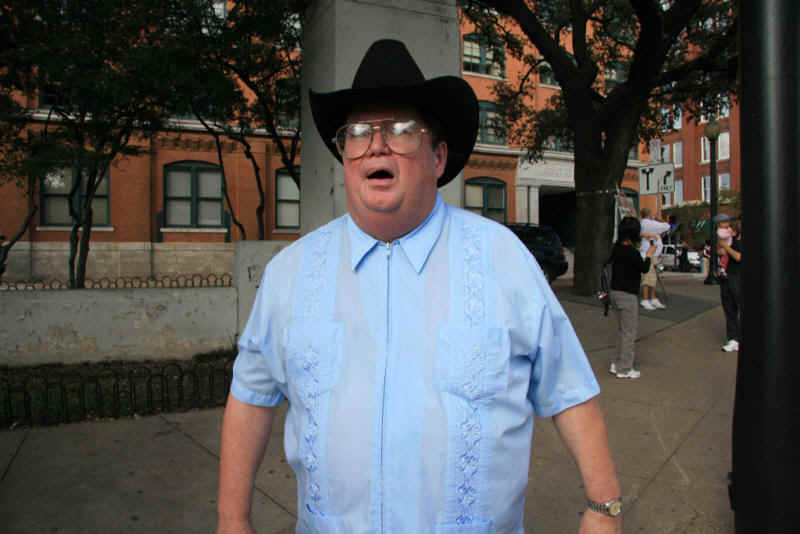
Above looks like someone in looking for an AA Meeting SEE>>> http://whokilledjfk.net/ed_cage_page.htm
Haven't seen him post for over a year (I think he died of AIDS)
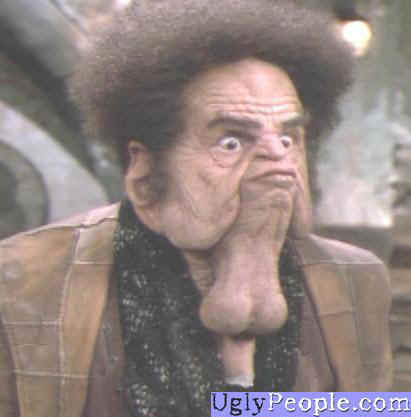
Above looks like tom lousy SEE>>> http://whokilledjfk.net/tom_lowery.htm
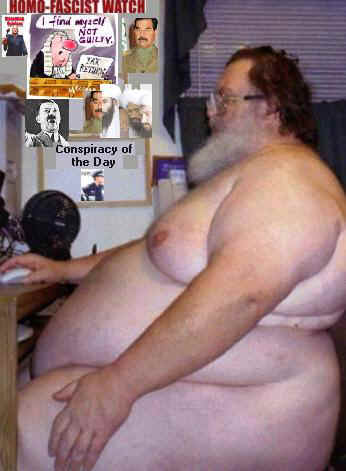

Above looks like Wally World (aka; The Joe Isuzu of the JFK Assassination)
SEE>>> http://whokilledjfk.net/wally_world.htm
SEE>>> http://www.youtube.com/watch?v=Ic0UejzZDZ8
Here's an e-mail i received recently>>
| Hello again, Mr Rossley! Since finding your radio debate vs. Corbett on Youtube, I have been reading many of the articles you have posted on your website. I sincerely believe that you have provided more information via Government Articles, than any other researcher. I have written to you before, offering more information on 2-3 subjects. I have also noticed, just by looking at the photos of him, that McAdams is : self-centered ; aggrandizing ; untrustworthy ; hiding "skeletons in the closet". I would not trust any child in his presence alone, based on the fact that I have ascertained over the years, that usually when someone is guilty of something, they try to pass their guilt on to someone else. I sincerely believe this is true in McAdams case, because he has that "Oddball" look about him. I wonder, since he is at a religios institution, if he has ever had access to the "choir boys". Honestly, if I were a child in his presence, I would do everything I could to remove myself from his presence. If you wish, you can forward this to him, because you definitely have my permission. As for my personal opinion, he looks like the kind of guy who would torture small animals. Maybe that's what he thinks we are - small animals. Call me a Badger! sincerely ; Lloyd E. Shivers |
| T H E O F F
I C I A L M A C A D A M S F A Q
1. Who is John McAdams? John McAdams is a professor of political science employed in the Jesuit Marquette University.2. Is John McAdams hell-bent on destroying the (alt.conspiracy.jfk) newsgroup? Sadly yes. His own words appended below summarize his intentions better than I could. From jmcadams@primenet.com Sat Feb 15 05:17:02 1997 Newsgroups: alt.conspiracy.jfk Subject: Re: Blown back by shot From: jmcadams@primenet.com (John McAdams) Date: 14 Feb 1997 22:17:02 -0700 You buffs have been cooperating marvelously with my scheme to make this group a shambles. And you know the bizarre part? My scheme is not a secret. I have publicly announced it. I have made it perfectly obvious. I have rubbed you buffs' noses in it. It's blatantly obviously to everybody. .John This recent post by McAdams should be viewed in terms of the Charter he submitted as part of the process of forming the moderated JFK group: This group will be for the purpose of providing an area for serious discussion and research of the assassination of President John F. Kennedy. The group will be moderated to prevent the noise and chronic personal attacks which have plagued alt.conspiracy.jfk and made it nearly useless as a vehicle for intelligent research. Questions surrounding JFK's death have made this one of the most talked about and controversial issues of our generation. This will be the one usenet group which deals seriously with this important topic. One supposes that since the noise and chronic personal attacks which have plagued the alt.conspiracy.jfk group were and are part of McAdams freely admitted plans to turn the group into a shambles, the moderated group can only be seen as his personal vehicle for selective manipulation of content. 3. Is McAdams connected to the CIA? Many people have suggested he is and it would not be difficult to imagine how useful a professor of political science at a respected university would be as a CIA asset. It is impossible to know if McAdams has "company" links but his background and behavior may shed some light. The following is a quote from a letter written by McAdams to the Milwaukee Sentinel Newspaper: (Dr) Gary Aguilar accused me on the politics forum of being A CIA sponsored disinformationist because I was once the Marquette Official representative of the I.C.P.S.R. an utterly unspooky social science data archive. The article below throws some light on just how "un-spooky" the ICPSR actually is
The ICPSR is housed in the Institute for Social Research, or ISR which itself has been documented has recipient of spook research grants. This is a repost of something Lisa Pease posted a while back that elaborates on these spook research grants and also contains Mcadams' admission, if not boast, that he was at one time "official representative" to ICPSR. They have a web page, so you can check it out for yourself. You may notice studies on assassinations and the courses on the "formation of elites" in Chile etc.. The URL is: http://www.icpsr.umich.edu/Of course, McAdams may or may not be connected with the CIA, you pay your money and take your chance in dealing with him. 4. Has McAdams any track record in covert-type activity? It seems he has! John McAdams attended the 1995 Copa Conference using the assumed name Paul Nolan. More than that, he also fabricated a background to go with the name in that he purported himself to be a jet-propulsion expert and some-time computer store owner from Sherwood, Wisconsin. In that guise, he was quoted in an article in the Washington press by journalist Matt Labash. Mr. Labash later confirmed that McAdams had duped him. Mr. Labash had quoted Paul (McAdams) Nolan in good faith whilst in fact McAdams was lying through his teeth. McAdams later claimed he had used an assumed name to avoid contact with users of the alt.conspiracy group who may have been attending the conference. With McAdams record of willfully abusing users of the group, this story might seem plausible but going to trouble of inventing a detailed cover story and lying to the press have more sinister overtones. 5. Has McAdams accused other group users of pedophilia and drug abuse? He most certainly has! In 1997 McAdams openly accused one Stuart Lyster of having served time in prison for child abuse and accused Dr Gary Aguilar of being a drug addict. In the light of McAdams behavior in the group and his other activities such as at the Copa Conference, Stuart Lyster asked McAdams explain his motives in using this group and in return posted the following offensive reply: From: 6489mcadamsj@vms.csd.mu.edu (John McAdams) Newsgroups: alt.conspiracy.jfk Subject: Re: A cornered rat turns vicious Date: 12 Sep 1995 13:04:53 GMT Organization: Marquette University - Computer Services In article < 405_9509091355@miratel.uniserve.com, Stuart.Lyster@miratel.uniserve.com (Stuart Lyster) writes: And .John refuses to discuss how he uses this newsgroup for profit. So, .John, are you ready to discuss your *REAL* use of this newsgroup and why you are here, and.... Stuart, you've first got to address charges that you are a pedophile who has served time in jail for molesting young children. I'm going to keep after you on this until you respond. .John This reply earned McAdams coverage in the Milwaukee Sentinal newspaper: By Tom Vanden Brook of the Journal Sentinel staff _____________________________________ A Marquette University professor who hurled profane insults across the Internet - including accusations of drug use and pedophilia - has been chastised by university officials, has annoyed people across the country, and has sparked a small, intense debate on etiquette in cyberspace. John McAdams, a political science professor who teaches a course on the Kennedy assassination and has created a home page on the World Wide Web devoted to the topic, admitted to using blue prose in computer correspondence. But he defended himself by saying he was responding in kind to people he says are viciously critical of his views on the assassination of President John F. Kennedy. "The Internet used to be a reasonable place to discuss the Kennedy assassination," McAdams said. "Now, it's a complete 'flamefest'."
"Flaming," in Internet circles, refers to diatribes aimed at those with differing viewpoints. McAdams is a vocal opponent of academics and others who ascribe to various conspiracy theories concerning the assassination. Last fall, participants in an assassination discussion group complained to the Roman Catholic university about McAdams' profane references to them on computer bulletin boards. Gary Aguilar, a San Francisco surgeon, said he contacted MU after McAdams asked him to respond to charges that he had used drugs. Aguilar vehemently denies using drugs. "He's extremely mean-spirited," Aguilar said. "What academic purpose can be served by calling people these names? I find it peculiar in the extreme that a professor at Marquette University, a Catholic institution, would do this."
In response to these criticisms McAdams said "I refuse to be driven off the Internet by abuse or attacks," McAdams said. "If I called somebody a bimbo, it's in reaction. I refuse to be bound by any notion of political correctness." Of course McAdams didn't call anyone a "bimbo" which is hardly a description calculated to fuel anger. What he did do is make allegations of child abuse and drug taking which is quite different. McAdams has made repeated claims that he did not accuse Stuart Lyster of child abuse, merely asked him to address allegations.... readers will recognize semantics when they encounter them. Subsequently, McAdams claimed Stuart Lyster had apologized to him and was not making an issue out of the pedophilia slurs. To date, despite repeated requests, McAdams has been unable to post this alleged apology. McAdams protestations of not actually having called Stuart Lyster a pedophile fails to square with an article written by Heather Anichini in Marquette University's own newspaper: In condemning Vanden Brook’s ‘unfair’ assessment of him, McAdams wrote that his school paper, the Marquette Tribune, had produced a very fair story. In that story, written by Heather Anichini and printed on 10/17/95, McAdams claimed he had only called someone a pedophile in response to that correspondent’s accusing me (McAdams) of using the group to write a book.... McAdams explained his actions in the Tribune saying, I was attempting to show the ridiculousness of such claims. ONE DOES NOT MAKE SUCH STATEMENT WITHOUT FOUNDATION. (emphasis added). The man later wrote and apologized (as noted above, no proof of this alleged apology has ever been offered by McAdams...perhaps he doesn't know how to fake email) So McAdams, in order to illuminate the inadvisability making charges without having a foundation, made himself the unfounded, and decidedly more mean-spirited, charge of pedophilia! The purpose of this FAQ is to address the McAdams problem facing this group and provide some insight for new users to the group of what is actually behind the flame wars being carried out by McAdams and a few of his associates.
Below we see that Several Anti-Castro Cuban organizations were housed at 3126 Harlendale. Along with the FPCC ! ! ! FBI Report
Including the FPCC (Fair Play For Cuba Committee) ! ! ! For Further illustration of how Intelligence Agencies operate SEE>>> http://whokilledjfk.net/church.htm
Deputy Sheriff Buddy Walthers reported that Oswald was seen at 3126 Harlendale in Dallas.
Below we see that Several Anti-Castro Cuban organizations were housed at 3126 Harlendale.
Including the FPCC (Fair Play For Cuba Committee) ! ! ! For Further illustration of how Intelligence Agencies operate SEE>>> http://whokilledjfk.net/church.htm
544 Camp Street in New Orleans was a HUB for "Anti-Castro Activities by Anti Castro Cubans who were subsidized by the CIA. Below are pages from Volume X of the HSCA.
544 CAMP STREET
POSNER (p. 141): "There simply is no credible evidence that Oswald ever had an office at 544 Camp Street or, much less, that he knew Guy Banister." Posner notes: 1. The HSCA "questioned six other individuals who worked for Guy Banister during the summer of 1963, and none of them recalled seeing Oswald at 544 Camp." (p. 139). The HSCA (X p. 128) lists seven witnesses who didn't see Oswald there: 4 worked there in the summer of 1963, one left in 1958, one left in January 1962, and one was a visitor who visited only through 1962. "Several witnesses recommended the Committee speak with Jack Martin or Delphine Roberts since they were in most contact with Banister." (HSCA X p. 129)Posner dismisses the following: 1. Oswald's leaflets were stamped " 544 Camp St. ," the address of the building in which Banister's office was housed. Posner correctly notes that Sam Newman, the building's owner, told the FBI he never rented to Oswald (HSCA X p. 123). This avoids the question of whether someone else rented an office for him, which is what might be expected if Oswald was working for Banister. 2. The testimony of Jack Martin, who said he saw Oswald with David Ferrie in Banister's office in 1963 (HSCA X p. 130). He was a not particularly reliable drunk who worked as an investigator for Banister. Sam Newman told HSCA that Martin was in Banister's office "90 percent of the time; every day almost" and he "kept up with all that stuff."(HSCA X p. 135, note 104) 3. The testimony of Delphine Roberts, Banister's secretary and mistress, that Banister kept a file on Oswald that "was kept out of the original files" (the Louisiana State Police confirmed Banister had a file on the FPCC and Oswald: HSCA X p. 131), that Banister was angry Oswald stamped 544 Camp St. on his leaflets, and that Oswald came into the office "on several occasions."(HSCA X p. 129) She also said Banister told her, when she reported Oswald's leafletting to him, that "He's with us. He's associated with the office." (Anthony Summers, Conspiracy, 1991 ed., p. 295) Posner notes that she is extreme right-wing, a religious nut and was paid for her interview with Anthony Summers (pp. 140-41), none of which proves she was lying. Banister friend and associate Ivan Nitschke told HSCA:"If you were trying to explore this to the fullest extent, I would say that Delphine would be No. 1."(HSCA X p. 135, note 104). Roberts told Summers Oswald worked for Banister. (Conspiracy, op. cit., pp. 294-5).He ignores the following: 1. James Arthus' statement to the Secret Service that a man whose name he didn't recall had tried to rent an office at 544 Camp Street . (HSCA X p. 125); he gave them the name of the woman who had dealt with the man, but she was never questioned. (Just as Banister was never asked about Oswald.) 2. The statement of Ross Banister, Guy's brother, that he knew Guy had an interest in Oswald, though he didn't think they were connected (HSCA X p. 128). 3. The statement of Ivan Nitschke, the Banister friend and associate, that Banister had some of Oswald's handbills in his office (HSCA X p. 128). 4. Banister's widow Mary confirmed this to Andrew Sciambra of Jim Garrison's office (Anthony Summers, Conspiracy, op. cit., p. 292). She found a supply of the leaflets in her late husband's storeroom (Warren Hinckle and William Turner, Deadly Secrets, p. 234). 5. Banister employees Allen and Daniel Campbell. Daniel reported that Oswald came into Banister's office and used the desk phone. Allen reports that instead of reacting with his usual anger at pro-Castro activities, Banister merely laughed when Oswald's leafletting was mentioned. (Conspiracy, op. cit., p. 293). 6. Another young Banister employee, George Higginbothan, said he kidded Banister "about sharing a building with people papering the streets with leftist literature." Banister responded:"Cool it--one of them is mine." (Hinckle and Turner, Deadly Secrets, pp. 234-5) 7. Adrian Alba, whose office Oswald regularly visited, reported seeing Oswald in Mancuso's restaurant, on the ground floor of 544 Camp St. (Conspiracy, op. cit., p. 296). The restaurant was frequented by Banister. The restaurant's owner described Banister, David Ferrie and Jack Martin as regular customers.(HSCA X p. 125). 8. CIA operative William George Gaudet reported seeing Oswald with Banister. (Conspiracy op. cit., p. 444). 9. Southern Louisiana University historian Michael Kurtz knew that Oswald and Banister twice visited the Louisiana State University campus together and engaged in heated discussions with students; he was, at the time, one of the students. He also saw the two together at Mancuso's (Kurtz, Crime of the Century, 1993 edition, p. 203, xxxix). Witnesses he interviewed for an earlier article reported seeing Oswald and Banister together at Mancuso's "with David Ferrie and Carlos Quiroga"; Oswald was seen entering Banister's office "several times"; one of Oswald's co-workers at the Reily Coffee Co. saw Oswald and Banister walking together on Camp St.; another witness reported the two attended a White Citizens' Council meeting (reminiscent of the meetings Oswald is known to have attended in Dallas). (Kurtz, "Lee Harvey Oswald in New Orleans: A Reappraisal," Louisiana History vol. 21, Winter 1980). 10. Another intriguing confirmation comes from Chuck Giancana, brother of Chicago Mafia boss Sam Giancana, who reported Sam told him that Banister was affiliated with the Chicago Mob from his FBI days in Chicago : "We know [him]...real well." (Sam and Chuck Giancana, Double Cross, p. 211) He was transferred to Marcello in New Orleans (ibid., p. 255), where the Chicago-affiliated roving Mob ambassador Johnny Rosselli kept in touch with him and approved his manipulation of Oswald (ibid., pp. 332-3). 11. Further confirmation comes from Through the Looking Glass: The Mysterious World of Clay Shaw by William Davy: New Orleans attorney Tommy Baumler, formerly an infiltrator of left-wing college groups for Banister, told interviewers in 1981 that "Oswald worked for Banister." .
LHO-BANNISTER
Kurtz may have included his account in his earlier Lousiana History article. In the book he tends to avoid using himself as a witness, perhaps feeling there was already enough evidence tying Oswald and Banister (hardly an "explosive" claim by 1982), but he added the account in his introduction to the paperback edition. I don't know if Andrews is credible or not. He may be on some things. Banister/Leaflets: Hinckle and Turner report that widow Mary Banister, gathering up Guy's effects at 544 Camp St. after his death, found a "large stack" of Fair Play leaflets. Delphine Roberts, who knew Banister's office as well as anyone (being his secretary and mistress), told Anthony Summers that Fair Play leaflets were kept in an office upstairs from the regular office, as Banister didn't want them in his normal business office. Her daughter confirmed that Oswald had an office there where he kept political literature. Summers says Andrew Sciambra's interview of Mary Banister indicated she found "a number of" the leaflets. However many leaflets Banister had, it's ludicrous to continue to act as though no Banister-Oswald connection has been proven. Here is a summary of the evidence:
1. Oswald's leaflets were stamped " 544 Camp St. ," the address of the building in which Banister's office was housed. Posner correctly notes that Sam Newman, the building's owner, told the FBI he never rented to Oswald (HSCA X p. 123). This avoids the question of whether someone else rented an office for him, which is what might be expected if Oswald was working for Banister. 2. The testimony of Jack Martin, who said he saw Oswald with David Ferrie in Banister's office in 1963 (HSCA X p. 130). He was a not particularly reliable drunk who worked as an investigator for Banister. Sam Newman told HSCA that Martin was in Banister's office "90 percent of the time; every day almost" and he "kept up with all that stuff."(HSCA X p. 135, note 104) 3. The testimony of Delphine Roberts, Banister's secretary and mistress, that Banister kept a file on Oswald that "was kept out of the original files" (the Louisiana State Police confirmed Banister had a file on the FPCC and Oswald: HSCA X p. 131), that Banister was angry Oswald stamped 544 Camp St. on his leaflets, and that Oswald came into the office "on several occasions."(HSCA X p. 129) She also said Banister told her, when she reported Oswald's leafletting to him, that "He's with us. He's associated with the office." (Anthony Summers, Conspiracy, 1991 ed., p. 295) Posner notes that she is extreme right-wing, a religious nut and was paid for her interview with Anthony Summers (pp. 140-41), none of which proves she was lying. Banister friend and associate Ivan Nitschke told HSCA:"If you were trying to explore this to the fullest extent, I would say that Delphine would be No. 1."(HSCA X p. 135, note 104). Roberts told Summers Oswald worked for Banister. (Conspiracy, op. cit., pp. 294-5). PLUS: 1. James Arthus' statement to the Secret Service that a man whose name he didn't recall had tried to rent an office at 544 Camp Street . (HSCA X p. 125); he gave them the name of the woman who had dealt with the man, but she was never questioned. (Just as Banister was never asked about Oswald.) 2. The statement of Ross Banister, Guy's brother, that he knew Guy had an interest in Oswald, though he didn't think they were connected (HSCA X p. 128). 3. The statement of Ivan Nitschke, the Banister friend and associate, that Banister had some of Oswald's handbills in his office (HSCA X p. 128). 4. Banister's widow Mary confirmed this to Andrew Sciambra of Jim Garrison's office (Anthony Summers, Conspiracy, op. cit., p. 292). She found a supply of the leaflets in her late husband's storeroom ( Warren Hinckle and William Turner, Deadly Secrets, p. 234). 5. Banister employees Allen and Daniel Campbell. Daniel reported that Oswald came into Banister's office and used the desk phone. Allen reports that instead of reacting with his usual anger at pro-Castro activities, Banister merely laughed when Oswald's leafletting was mentioned. (Conspiracy, op. cit., p. 293). 6. Another young Banister employee, George Higginbothan, said he kidded Banister "about sharing a building with people papering the streets with leftist literature." Banister responded:"Cool it--one of them is mine." (Hinckle and Turner, Deadly Secrets, pp. 234-5) 7. Adrian Alba, whose office Oswald regularly visited, reported seeing Oswald in Mancuso's restaurant, on the ground floor of 544 Camp St. (Conspiracy, op. cit., p. 296). The restaurant was frequented by Banister. The restaurant's owner described Banister, David Ferrie and Jack Martin as regular customers.(HSCA X p. 125). 8. CIA operative William George Gaudet reported seeing Oswald with Banister. (Conspiracy op. cit., p. 444). 9. Southern Louisiana University historian Michael Kurtz knew that Oswald and Banister twice visited the Louisiana State University campus together and engaged in heated discussions with students; he was, at the time, one of the students. He also saw the two together at Mancuso's (Kurtz, Crime of the Century, 1993 edition, p. 203, xxxix). Witnesses he interviewed for an earlier article reported seeing Oswald and Banister together at Mancuso's "with David Ferrie and Carlos Quiroga"; Oswald was seen entering Banister's office "several times"; one of Oswald's co-workers at the Reily Coffee Co. saw Oswald and Banister walking together on Camp St. ; another witness reported the two attended a White Citizens' Council meeting (reminiscent of the meetings Oswald is known to have attended in Dallas ). (Kurtz, "Lee Harvey Oswald in New Orleans : A Reappraisal," Louisiana History vol. 21, Winter 1980). 10. Another intriguing confirmation comes from Chuck Giancana, brother of Chicago Mafia boss Sam Giancana, who reported Sam told him that Banister was affiliated with the Chicago Mob from his FBI days in Chicago : "We know [him]...real well." (Sam and Chuck Giancana, Double Cross, p. 211) He was transferred to Marcello in New Orleans (ibid., p. 255), where the Chicago-affiliated roving Mob ambassador Johnny Rosselli kept in touch with him and approved his manipulation of Oswald (ibid., pp. 332-3). 11. Further confirmation comes from Through the Looking Glass: The Mysterious World of Clay Shaw by William Davy: New Orleans attorney Tommy Baumler, formerly an infiltrator of left-wing college groups for Banister, told interviewers in 1981 that "Oswald worked for Banister." HSCA VOLUME X 544 CAMP ST.
1III. 544 CAMP STREET AND RELATED EVENTS (460) On August 9, 1963, Lee Harvey Oswald was arrested on Canal Street in New Orleans and charged with disturbing the peace . (1) The arrest was the result of a confrontation with anti-Castro Cuban exile Carlos Bringuier and two of his associates, Miguel Cruz and Celso Hernandez.(2) Oswald was handing out pro-Castro leaflets (3) when Bringuier, Hernandez and Cruz approached him. (4) When Hernandez tried to take the leaflets from Oswald, a shouting match began ; (5) the New Orleans police then intervened, arresting all four individuals. (6) (461) Samples of Oswald's literature were confiscated by the police. (7) One of the pamphlets bore the hand-stamped imprint of an address for the pro-Castro Fair Play for Cuba Committee-of which Oswald was the president and only member in New Orleans-as "544 Camp Street, New Orleans, La." (8) (462) This pamphlet was among the materials turned over by the New Orleans police department to the Secret Service following the assassination. (9) The Secret Service and theFBI then set out to investigate the 544 Camp Street address. (10) These agencies established several facts : (463) The address had been stamped with a home printing kit in the same manner Oswald had stamped other literature with his alias "A. J. Hidell" or "L. H. Oswald,"(11) indicating it was by Oswald's own hand that the 544 Camp Street address was printed on the pamphlet. (464) It was learned also that Oswald had written to the national president of the Fair Play for Cuba Committee, Vincent T. Lee, on August 1, 1963, 8 days before his arrest.(12) In the letter, Oswald mentioned he had rented an office for his local FPCC chapter, but was told to vacate after 3 days because the building was to be remodeled. (13) (465) The FBI and the Secret Service investigation apparently focused on whether or not Oswald actually had rented an office at the 544 Camp Street address. (14) (466) In interviews with the FBI and the Secret Service, the building owner, Sam Newman, denied renting an office to Oswald. ( .41 .5) Others renting office space at 544 Camp Street were questioned, but none recalled seeing Oswald at the Newman Building or elsewhere in New Orleans. (16) (467) During the course of that investigation, however, the Secret Service received information that an office in the Newman Building had been rented to the Cuban Revolutionary Council from October 1961 through February 1962.(17) Leaders of the CRC were contacted and asked if they had any association with or knowledge of Oswald or the Fair Play for Cuba Committee. (18) The Cubans said they had none because they had vacated the building 15 months prior to Oswald's appearance in New Orleans. (19) (123) 124 (466) The investigation of a possible connection between Oswald and the 544 Camp Street address was closed . (20) The 1'Varren Coinmission findings concurred with the Secret Service report that no addit ional evidence had been found to indicate Oswald ever maintained an office at the 544 Camp Street address. (21) (469) The committee investigated the possibility of a connection between Oswald and 544 Camp Street and developed evidence pointing to a different result . (470) The committee learned that the Newman Building occupied the corner lot facing Lafayette Square . On one side its address was 44 Camp Street . (22) Its other entrance was addressed 531 Lafayette Street . (23) It was a three-story granite structure owned and operated by Sam Newman as a rental income property for commercial offices. (24) . (471) The committee interviewed Sam Newman and other witnesses to obtain a complete list of the occupants of the building for the period from May 1963. when Oswald arrived in New Orleans, to September 1963, when he departed . (472) Newman told the committee he had great difficulty renting space in the building. (2-5) Consequently, there were few tenants there in the summer of 1963. The Camp Street address was the main entrance to offices for two workers' associations : the Hotel, Motel, and Restaurant Workers' Union and the Amalgamated Association of street Electric Railway and Motor Coach Employees of America. (26) It was also the entrance that led to the quarters of the building's janitor, James Arthus . (2i) There was only one office at the Lafayette Street address, that of Guy Banister Associates, a private investigative firm. (28) The offices once rented by the Cuban Revolutionary Council at 544 Camp Street still lay empty. (29) "Mancuso's," a small coffee shop, was located on the ground floor with its own entrance onto the corner of Camp and Lafayette Streets. (30) (473) The committee located and interviewed individuals associated with these organizations. Whenever possible, the committee obtained relevant records from the organizations to check for any link to Oswald or persons implicated in the assassination investigation. Thecommittee investigation produced no evidence of any connection between Oswald and any person or organizations occupying the Newman Building in 1963, except for that involving Guy Banister's private detective agency. (474) Before discussion of the investigation of the Banister office, this material sets forth the results of the investigation into the other occupants of 544 Camp Street . (475) The Hotel, Motel, and Restaurant Employees Union is known today as the Hotel and Restaurant Employees and Bartenders' Union (International) . (31) Although the committee was unable to locate personnel who had worked in the office at 544 Camp Street and had been interviewed by the Secret Service following the assassination, the committee did obtain a "master" membership list from the union. (32) The lists contained names of members for the years 1962 through 1964 that were studied for names of associates of Oswald or others of interest in the investigation. Among the names appearing on the list as it member from October 30, 1962, "through April 1963" was Kerry 125 Thornley,(33) who had been an acquaintance of Oswald's for "3 or 4 months" in 1959 when both were stationed at the El Toro Marine Corps base in Santa Ana, Calif. (34) Later, Thornley learned of Oswald's defection to the Soviet Union from newspaper accounts. (35) Thornley found the story so interesting that he set out to write a novel based on Oswald's defection. (36) (476) Nevertheless, the committee's investigation of Kerry Thornley uncovered nothing of significance in the appearance name of Thornley's on the list of members of the union. As reflected in the union's records, Thornley dropped his membership after April 1963. (37) Thornley had left New Orleans to travel to California and Mexico and did not return to New Orleans until August 1963,(38) leaving little overlap of time in which Oswald and Thornley could have possibly come in contact. (477) Thornley firmly denied contact with Oswald at 544 Camp Street in New Orleans or at any time since his Marine Corps days. (39) His statements have been corroborated and no evidence has been found to contradict him. (478) The committee also located and interviewed George S. Gay, present preeident of the Amalgamated Association of Street Electric Railway and Motor Employees of America. (40) Gay has been president of the union since 1:M0 (.,1r1) and confirmed for the committee that the union's office was located in the Newman Building in 1963. (1r2) While Gay reiterated what he had told Secret Service agents, that he did not recall ever seeing Oswald in the building, (.l3) he told the committee he was not in the office very much due to frequent business trips.(44) He said he did not mingle with the other tenants in the building. (4.5) Gay believed the union's secretary at the time, Mrs. Eugenia Donnelly, would have more information about others in the Newman Building . (.46) Subsequent attempts to locate Donnelly proved futile and she was believed deceased. (1,7) Unfortunately, she was not questioned by investigating officials following the assassination of President Kennedy. (479) Tack Mancuso, owner of Mancuso's Coffee Shop located on the ground floor of the Newman Building, was interviewed by committee investigators and questioned about his customers. (.48) Mancuso recalled that Guy Banister and his associates Jack Martin and David Ferrie were "steady" customers, but Mancuso could not personally recall ever having seen Oswald. (a,9) Mancuso was not interviewed by FBI or Secret Service agents following the assassination. (50) (480) James Arthus was interviewed by Secret Service agents im- mediately following the assassination. (51) He told the agents that an unknown man had attempted to rent an office at 544 Camp Street, but that he had discouraged him. (52) Arthus could not describe the man and recommended the agents speak with "Mrs. Downing," presumed to be Mrs. Donnelly, since she had also seen the man and could possibly provide a description of him. (53) As pointed out above, Mrs. Donnelly was not interviewed by either the Secret Service or the FBI on this matter . The committee learned that Arthus died in 1967. (51.) (481) The FBI and the Secret Service apparently failed to apuestion all the occupants of 544 Camp Street, including a witness who may have had information about a man who had attempted to rent space 43-944-79-9 12 6 there. While the FBI did speak to GuyBanister, there is no indication from the report of that interview that Banister was asked any questions about Oswald. Instead, he was asked about Serigo Arcacha Smith and the Cuban Revolutionary Council. (55) (482) The overall investigation of the 544 Camp Street issue at the time of the assassination was not thorough. It is not surprising, then, that significant links were never discovered during the original investigation. The committee concentrated on an investigation of the activities and individuals in and around the office of Guy Banister, since this was the area of the least investigation in the days following the assassination. Various resources were consulted by the committee for information regarding Banister and his colleagues. These included : original documents from Banister's office collected during the 1967-69 investigation into the Kennedy assassination by the New Orleans District Attorney ; investigative reports of the district attorney's office dating from that investigation ; materials amassed during the 1961-63 investigation of David Ferric by Federal Aviation Administration officials including transcripts of Ferrie's grievance hearings : information obtained from Aaron Kohn of the Metropolitan Crime Commission of \ev- Orlewis : and information obtained from reviews of relevant files of the FBI, Secret Service, DOD and CIA. In addition, the committee interviewed several surviving witnesses, many of whom had worked for or with GuyBanister. X483) According to one of Banister's own biographical sketches dated March 1964, he was born in a log cabin in rural Louisiana in 1901, the eldest of 7 children.(56) He started his career in criminal justice with the police department of Monroe, La. (57) In 1934, he became a special agent for the agency of the Department of Justice that was soon to be named the Federal Bureau of Investigation. (58) Banister served in the FBI for 20 years, 17 of those years as special agent in charge . (59) He retired in 1954 to become assistant superintendent for the New Orleans Police Department and was assigned the task of investi_-atin;!~, police corruption .(6(1) After a fallinm out with the mayor of 'Yew Orleans, allegedly over Banister's attempt to have the mayor indicted on charges of "malfeasance, etc.", Banister quit public service and formed his own private detective agency, Guy Banister Associates, Inc. (61) (484) According to FBI files reviewed by committee staff, Banister also became excessively active in anti-Communist activities after his separation from the FBI and testified before various investigating bodies abort the dangers of communism. (62) The CIA file on Guy Banister indicated the agency considered in September 1960 r1sing Guy Banister Associates for the collection of foreign intelligence, but ultimately decided against it (63), for several reasons. (6l4) Early in 1961, Banister helped draw up a charter for the Friends of Democratic Cuba, an organization set up as the fundraising arm of Sergio Arcacha Smith's branch of the Cuban Revolutionary Council. (65) Banister described his work for the Council Our work was primarily to gather food and clothing for the refugees. However because of my being known in con127 nection with that, [and] my background being known with Arcacha Smith and others, I have had high-ranking Cuban refugees in my office asking me how to go underground, and I gave them diagrams for that. I have talked to military and political leaders from the various provinces of Cuba that have slipped out and slipped back. (66) (485) The FBI files also indicate Banister was performing another service for the Cuban exile group. IIe ran background investigations on those Cuban students on the cainpus of Louisiana State lJniversitv n-lio wished to be ineml)ers of Arcacha Smith's anti-Castro group, ferreting out any pro-Castro sympathizers who might be among them. (G''~) Banister also talked Sam Ne«-man into leasing 544 Camp Street to the Cuban Revolutionary Council. (68)~~ (486) It was probably a result of such anti-Castro activities that Banister became acquainted i~ith David Ferrie . Ferrie, an Eastern Airlines pilot, was also extreinely active in Sergio Arcacha Smith's anti-Castro group. (69) Ferric shared Banister's anti-Communist and anti-Castro fervor. (70) (487) Both Ferric and Banister were implicated in a raid in late 1961 against a mu;iitions depot in l:Iotuna, La., in which varioi :s weapons, grenades and zinmtmition were stolein.(71) Banister's role may have been limited to storing the materiel which was reportedly seen stacked in Banister's back room by several witnesses. (72) Others who actually participated in the raid, include Andrew Blackmon, a Ferric associate and foriner C1C11 Air Patrol cadet, and Sergio Arcacha Sjnith .(73) (488) In February 1962, Ferrie requested Banister's assistance in fighting his recent dismissal from Eastern Airlines . (74) Banister investigated the case for Ferrie's defense to charges brought by the airline and local New Orleans police of crimes against nature and extoition. (75) In exchange, Ferrie provided Banister research services, such as analysis of autopsy reports. (76) Banister worked with Ferrie's lawyer, G. 11'ray Gill, on this matter until its culmination in Ferrie's hearing before the Airline Pilot's grievance board in the summer of 1963. (77) Banister testified on Ferrie's behalf during those hearings. (78) According to the statements of witnesses in the fall of 1963, Ferrie and Banister worked together again with G. gray Gill for the defense of New Orleans organized crime head Carlos Dlarcello on a deportation case. (79) Little is known of Banister's exact contribution to that investigation which ended in acquittal on the day and at almost the precise hour that President Kennedy was shot. (80) (489) The long-standing relationship of Ferric and Banister is significant since Ferrie became a suspect in the Kennedy assassination soon after it had occurred. (81) The information to the district attorney's office that had put the spotlight on Ferric had emanated from Banister associate, Jack Dlartin.(82) As detailed elsewhere in this staff report, although Ferric was cleared of suspicion in the assassination during the original investigation, the committee found evidence of a possible association between Ferrie and Oswald. (490) Although Banister was questioned by the FBi following the assassination in regard to the activities of the CRC at 544 Camp Street, 128 the FBI and the Secret Service failed to discover the significance of Banister's connection to 544 Camp Street ; Banister's close association with a suspect in the assassination, David Ferrie ; and Banister's close association with Ferrie's accuser, Jack Martin-all of which raised the question of what, if anything, was Banister's relationship to Lee Harvey Oswald. (491) Witnesses interviewed by the committee indicate Banister was aware of Oswald and his Fair Play for Cuba Committee before the assassination . Banister's brother, Ross Banister, who is employed by the Louisiana State Police, told the committee that his brother had mentioned seeing Oswald hand out Fair Play for Cuba literature on one occasion. (83) Ross Banister theorized Oswald had used the 544 Camp Street address on his literature to embarrass Guy.(&_) Ross Banister did confirm Guy's interest in the assassination and Osivald, but knew of no direct association between Oswald and Banister. (492) Ivan F. "Bill" Nitschke, a friend and business associate and former FBI agent, (85) corroborates that Banister was cognizant of Oswald's leaflet distributing. Nitschke was deposed by the committee in July 1978. (86) He testified that he had known Banister when they were both in the FBI and for a short time worked for Banister in tho o{lice in theNewman Building. (87) (493) Nitschke said he never saw Lee Harvey Oswald at 5-'44 Camp Street and does not know if Banister ever met Oswald. (88) Nevertheless. Nitschke recalls that Banister became "interested in Oswald" during the summer of 1963 when Oswald had been distributing handbills. (89) Nitschke recalls Banister had some of these handbills in his office or made reference to them. (90) From the context of the conversation, however, he was not pleased. (91) (494) Delphine Roberts, Banister's long-time friend and secretary, stated to the committee that Banister had become extremely angry with James Arthus and Sam Newman over Oswald's use of the 544 Camp Street address on his handbills. (92) (495) The committee questioned Sam Newman regarding Roberts' allegation. Newman could not recall ever seeing Oswald or renting space, to him. (93) He did recall . however, asking a young man who was in the office once used by the Cuban Revolutionary Council to leave. (9l) Newman did not thin'.; this person was Oswald. (95) Newman theorized that if Oswald was using the 544 Camp Street address and had any link to the building, it would have been through a connection to the Cuban Revolutionary Council or Banister's office . (96) (496) The committee questioned other individuals once affiliated with Guy Banister, including : Joseph Newbrough and Vernon Gerdes, investigators who had worked with Banister in 1963 ; (97) Marv Helen Brengel, one of two secretaries in Banister's office from approximately June 1963 to December 1963 ; (98) Louise Decker, a secretary in Banister's office for the period from October 1961 to January 1962 ; (99) Joseph Oster, one time partner of Banister's who set up his own private detective agency, Southern Research, in 1958 ; (100) and Carlos Quiroga, the Cuban exile who visited Oswald at his home on approximately An.snist 16, 1963, endeavoring to learn more about the FPCC. (101) (luiroga told the committee he frequently visited Banister's office and Mancuso's coffee shop in the company of Sergio Arcacha Smith and 129 David Ferrie when all were heavily involved in Cuban exile activities . (10°2) Yet this would have been in 1961 and 1962.(10 .:) None of these individuals recalled seeing Oswald at 544 Camp Street. Several witnesses recommended the committee speak with Jack Martin or Delphine Roberts since they were in most contact with Banister . (10_F) (497) Martin and Roberts have both been interviewed by the committee on several occasions. Roberts, who initially refused to speak with the committee staff, told the committee she was very active in anti-Communist activities in the e-,rly 1960's.(10,5) She said she worked with Banister as a volunteer typing correspondence, making files and clipping newspapers because Banister was worl:inn fo,- -what Roberts believed in . (10(7) Roberts claimed Banister had an extensive file on Communists and fellow travelers, including one on Lee Harvey Oswald, which was kept out of the original files because Banister "never got around to assigning a number to it."(107) Roberts did not remember what was in the file other than that it contained general information on Oswald such as newspaper clippings.(108) Rollerts also related the incident described previolusly in this section in which Banister became angry over Oswald's use of the Camp Street address. (10<9) Robertq gave the committee her version of an incident that took place late in the evening on the day of the assassination. She said Jack Martin came into the office and approached the area of the office where the files were kept, when Banister walked in .(110) Banister accused 7kTartin of stealing several files and hiding them in his coat. (111) When Martin protested, Banister pulled out his minandstruck Martin on the head, ca?us~ng lug to bleed.(11~) Both men then went into Banister's private office and continued their discussion beyond Roberts' earshot, (113) (494) During another interview, Roberts told the committee that Oswald came into the office seeking employment and sometime later bronmllt Marina in with him.(114) Contrary to her statements in the initial interview, that she had never seen Oswald. she stated that she saw Oswald come into Banister's office on several occasions. (115) Because of such con+radictions in Roberts' statements to the committee and lack of independent corroboration of many of her statements, the reli9bility of her statements could not be determined. (499) A_ New Orleans police complaint filed by Jack Martin on November 22, 1963, corroborated Roberts' storv insofar as it established Banister's assault against Ja ck 1flartin with the pistol . (116) According to the renort . Martin and Banister had been drinking at a bar nei?hborinrr the Newman Building, then visited the Banister's office and became involved in various discussions about "personal and political snbiects."(117) Thev then began to argue about unanthori7ed longdistance, telephone calls which Banister accused Martin of malting from the office . (118) The discussion became more heated and Banister pulled out a 357 magnum revolver and hit Martin on the head four or five times with the butt of the gum. (119) When Martin began to bleed, B,ni-t-r stopped hitting him and Martin went to the restroom to clean Tern . (1??0) Banister told Martin to watch himself and be careful. (121) 11Tgrtin then went to Charity Hospital for treatment, returned home and called the police to file the report. (1°2°2) Martin refused to press charges as Banister was "like a father" to him. (1°23) 130 (500) Martin was questioned by the committee regarding the incident and for information about Banister's office . Martin told the committee he is a part-time investigator and writer . as he was in the early 1960's . (121) Martin was one of the members of Banister's investigative "pool" and was frequently in and out of Banister's office . (125) Martin told the committee that on November 22, 1963, he was having drinks with Banister at a local bar and they got into an argument, (126) Thev went, to BanistWs office and, in the bent, of the quarrel, Banister said something to which Martin replied, "'"That are you going to do-kill me like you all did Kennedy?" (12,') Banister drew his pistol and beat Martin in the head. (_7 ?8) 11artin believed Banister would have killed him but for the intervention of Banister's secretary, who pleaded with Banister not to shoot -Martin. (129) (501) It was the day after this incident that -Martin related his suspicions about David Ferrie to the New Orleans district attorney's office . (130) Martin had at one time been a close associate of Ferric. (131) Ferrie told the FBI he met -Martin in the fall of 1961, probably not long after Ferrie had met Banister. (132) Martin apparently shared b'errie's interest in obtaining a position with an ecclesiastical order, although Ferric insisted he became involved with these religions orders only to assist Martin in a Department of Health, Education, and Welfare investigation into the sale of phony certificates of ordination and consecration .(132) Ferric said he and -Martin had a falling out, when he put -Martin out of attorney G. Wray Gill's office in June 1963. because Gill did not want Martin "hanging around the office ." (13!x) Gill said Ferrie and Martin had been "close friends" until they got involved in an "ecclesiastical deal wherein 'Martin was supposed to represent a large territory of the Holy Apostolic Catholic Church of North America."(135) Martin held Ferrie responsible for not getting the Job and has "slandered Ferrie at every opportunity." (136) (502) Martin has also told the committee he caw Lee Harvey Oswald with Ferrie in Guy Banister's office in 1963. (1.37) Nevertheless, in light of -Martin's previous contradictory statements to authorities shortly after the assassination in which Martin made no such allegation about having seen Oswald, (138) it may be argued that credence should not be placed in Martin's statements to the committee. (503) The committee sought to trace Banister's office files that had been reportedly scattered to various individuals or agencies soon after Banister's death in June 1964. (504) Mary Banister Wilson, Guy Banister's widow, told the committee she had not retained any of the files but had given many away to various organizations . (139) -Mrs. Wilson said she sold some of Banister's files to the Louisiana State police in a transaction involving Russell Willie of the State police .(140) She said another portion of the file was given to Aaron Kohn of the New Orleans Metropolitan Crime Commission. (141) The committee learned several books from Banister's collection went to Banister's associate, Kent Courtney. (142) The rest of Banister's "extensive" librarv of books was donated to the Louisiana State University Library. (1.~3) (505) Russell Willie and Joseph Cambre of the Louisiana State Police confirmed for the committee that they purchased from Mary Banister in late 1964 a five-drawer file containing file folders belonging to the late Guy Banister. (14!x) The "half-filled" file cabinet contained 10 large manila folders, each subject titled and numbered. (145) One of the folders contained a group of 3" by 5" index cards. (116) The index cards contained numbers and subject headings corresponding to the file folders in the cabinet. (147) Not all the files listed in the index were among those files given to the Louisiana State Police ; most of the files obtained by the State police dealt with Communist groups and subversive organizations, according to State Police Officer Cambre. (148) Cambre recalled that although Lee Harvey Oswald's name was not included among the main subjects of the files, Oswald's name was included among the main subjects of the file on the Fair Play for Cuba Committee. (1419) Cambre had read the FPCC file and found news clippings and a transcript of a radio program in which Oswald had participated, presumably a transcript of the Augrnst 21, 1963, debate between Oswald and Carlos Bringuier on WDSU radio. (150) Unfortunately, this file was routinely destroyed in keeping with the requirements of the Privacy Act. (151) (506) Aaron Kohn, managing director of the New Orleans Metropolitan Crime Commission, acknowledged that he received files from Mary Banister Wilson after Guy Banister's death. (152) The files received by Kohn dealt with an investigation of corruption within the New Orleans Police Department, which Banister had conducted while he was assistant superintendent of police in New Orleans in the mid-1950'x . (153) (507) While the committee was unable to trace or recover all of Banister's files, a partial index of the files was made available by Jim Garrison, former district attorney of Orleans Parish, La. (15.x) Garrison had sent investigators to the Louisiana State Police intelligence section in 1967 during his investigation into the assassination of President Kennedy. (155) The index did not include the name of Lee Harvey Oswald or the Fair Play for Cuba Committee. (156) (508) Thus, the committee could find no documentary proof that Banister had a file on Lee Harvey Oswald nor could the committee find credible witnesses whoever saw Lee Harvey Oswald and Guy Banister together. There are indications, however, that Banister at least knew of Oswald's leafletting activities and probably maintained a file on him. As for Jack Martin's reasons for calling attention to Ferric as a suspect in the assassination, they may not have been based on personal knowledge-Martin never claimed such information-but his action seems to have been based on sincere concerns and some legitimate suspicions. Consequently, it is not possible to determine definitely the reasons for Banister's assault on Martin the night of the assassination, specifically, whether it had anything to do with Martin's suspicions of Ferric . (509) The primary import of the 544 Camp Street address must be analyzed within the contest of evidence of a Ferric-Oswald link. Unfortunately, the precise nature of their relationship may never be known. (510) As can be seen by the committee investigation into Ferrie's associations and activities throughout his life and especially during the summer of 1963 . there are several factors which explain why Ferric and Oswald could have become closely associated, as improbable as this may seem (511) A. Both men spent considerable time in the same locale : Ferrie frequently visited the office of Guy Banister in the building at 544 Camp Street ;* Oswald worked only one block away and had used 544 Camp Street as the address of the Fair Play for Cuba Committee. Additionally, the testimony of a number of witnesses from Clinton, La., placing Oswald and Ferrie together in early September 1963, may be credible . Evidence also exists to support the belief that a Ferrie colleague, Guy Banister, knew Oswald's pro-Castro leafletting. (512) B. Both men had similar, fervent interest in political topics, especially the Cuban question. Although Ferrie stood firmly on the anti-Castro side of the issue and Oswald was involved in pro-Castro activities, this alone would not rule out the possibility of an Oswald- Fe-rrie association. (513) Oswald, on at least one occasion, made a friendly overture to a known anti-Castro activist, Carlos Bringuier, the New Orleans delegate to the Student Revolutionary Directorate (DRE) and even offered Bringuier assistance in military training of Cuban exiles . The Oswald-Ferrie association may have begun in the same manner. (514) C. Significant to the argument that Oswald and Ferrie were associated in 1963 is evidence of prior association in 19,55 when Ferrie was captain of a Civil Air Patrol squadron and Oswald a young cadet. This pupil-teacher relationship could have greatly facilitated their reacquaintance and Ferrie's noted ability to influence others could have been used with Oswald. (515) D. Ferrie's experience with the underground activities of the Cuban exile movement and as a private investigator for Carlos Marcello and Guy Banister might have made him a good candidate to participate in a conspiracy plot. He may not have known what was to be the outcome of his actions, but once the assassination had been successfully completed and his own name cleared, Ferrie. would have had no reason to reveal his knowledge of the plot. Further, fear for his life may have prevented himfrom doing so. (516) While it could not be definitely determined whether Ferrie had any contact with Oswald after Oswald left New Orleans on September 24, 1963, until the day of the assassination only 2 months later, the possible Oswald-Ferrie relationship is a significant Oswald association. Submitted by 132 GAETON J. FONZI Investigator. PATRICIA M. ORR Researcher. *Strangely, although Ferrie seemed to be straightforward during his interviews with FBI agents in discussing his opposition to Kennedy, his conflict with Jack Martin, his involvement in the Marcello case, et cetera, Ferrie denied outright that he had ever known "of the Cuban Revolutionary Front maintaining an office at 544 Camp Street, nor does he have any knowledge of Sergio Arcacha Smith maintaining an office at that address during the time he was head of the organization and later after he was replaced." (157) This is clearly in contradiction to the accounts of the witnesses on this subject. 133 REFERENCES (1) Report of the President's Commission on the Assassination of President Kennedy (Washington, D.C . : U.S. Government Printing Office, 1964), p . 728 (hereinafter cited as the Warren Report) . (2) Ibid . (3) Hearings before the President's Commission on the Assassination of President Kennedy (Washington, D.C. : U.S . Government Printing Office, 1964), vol. XXVI, CE--2966 A and B (hereinafter cited as Warren Commission Hearings) . ( .~) Warren Report, p . 728 ; Deposition of Carlos Bringnier, May 12, 1978, House Select Committee on Assassinations, pp. 126-129 (J. F. K. Document 009084) . (5) Ibid . (6) Warren Report, p . 826 . (7) Ibid . (8) XXVI, Warren Commission Hearings, p. 30, CE-3120, Pamphlet, "The Crime Against Cuba," Corliss Lamont. (9) Ibid ., vol . XXVI, p . 11, CE-3119, Secret Service Report, Nov. 30, 1963, CO-2-34 .030 . (10) Ibid . ; FBI teletype, FOIA materials, 62-109060-1668, Nov. 26, 1963, pp. 1-3 . (11) XXVI, Warren Commission Hearings, CE-2966 A and B. (12) Ibid., vol. XX, Lee DE-7. (13) Ibid. (14) Warren Report, p . 408 ; XXII, Warren Commission Hearings, CE-1414 ; FBI teletype, FOIA materials, 62-109060-1668, Nov. 26, 1963, pp. 1-3 . (15) Did. ; XXII, Warren Commission Hearings, CE-1414. (16) Ibid . (17) Ibid . (18) Ibid . (19) Ibid . (20) Ibid. ; FBI teletype, FOIA materials, 62-109060-1668, Nov. 26,1963, pp. 1-a QI) Warren Report, pp. 292 and 408 . (22) Deposition of Sam Newman, Nov. 6, 1978, House Select Committee on Assassinations, p. 21 (J . F. K. Document 014020) . (23) Ibid . (2/F ) Id . a t p . 5 . (25) Id . a t p . 22 . (26) XXII, Warren Commission Hearings, CE-1414, Secret Service Report, CO-2-34,030 . pp. 4-5. (27) See ref . 22 . (28) Id . a t pp. 9,21 . (29) Td . i t pp. 23-24 . (°0) Id . a t p. 13. (31) Outside Contact Report with Attachment, Mrs. Anna Stewart, Apr. 11, 1978, House Select Committee on Assassinations (J. F. K. Document 007364) . (32) Ibid., attachments : Rosters through October 1962, April 1963 and March 1964. (33) Ibid ., roster through October 1962, p. 14 (first list) ; roster through April 1963, p. 16 (second list) . (3l,) FBI teletype, FOIA material, 62-109060-1668, Nov. 26, 1963, p. 9 . (35) Kerry Thornley affidavit, Jan. 8, 1976, p. 1, House Select Committee on Assassinations (J. F. K. Document 012740) . (Note : This statement, while rambling and confusing, remains consistent on the major point that Thornley had no contact with Oswald after service in the Marines.) (36) Ibid . : see also testimony of Kerry Thornley, May 18, 1964, XI, Warren Commission Hearings, pp. 96-97. (37) Outside Contact Report. Mrs. Anna Stewart, Apr. 11, 1978, House Select Committee on Assassinations, attachment roster through March 1964 (J. F. X. Document 007364) . (38) FBI teletype, FOIA material, 62-109060-1668. Nov. 26, 1963, p. 9. (39) Ibid. ; Secret Service Report, Dec. 2, 19639 CO-2-34,030 (J. F. K. Document 003675) : Thornley testimony, XI, Warren Commission Hearings, 110 . (40) Outside Contact Report, George S . Gap, Jan. 13, 1978, House Select Committee on Assassinations (J. F. K. Document 005191) . 134 (41) XXII, Warren Commission Hearings, CE-1414, Secret Service Report, CO-2-34,030, Dec. 9, 1963, p. 5. (12) Outside Contact Report, George C. Gap, Jan. 13, 1978, House Select Committee on Assassinations (J . F. B. Document 005191) . (43) Ibid . ; XXII, Warren Commission Hearings, CE-1414, Secret Service Report . CO-2-34,030, Dec. 9, 1963, p. 5. (44) See ref. 42. (45) Ibid . (46) Ibid . (47) Outside Contact Report, George S. Gap, re : Eugenia Donnelly, June 6, 1978, House Select Committee on Assassinations (J.F .K. Document 009115) . (1,8) Outside Contact Report, Jack 'Mancuso, Jan. 26, 1978, House Select Committee on Assassinations (J. F. K. Document 014120) . (19) Ibid . (50) Ibid . (51) XXVI, Warren Commission Hearings, CE-3119, Secret Service Report, Nov. 30, 1963, CO-2-34,030, p. 15. (52) Ibid . (.5°) Ibid . (54) Outside Contact Report, re : James Arthus. June 1, 1978, House Select Committee on Assassinations (J. F. K. Document 009047) . (55) FBI Teletype, FOIA material, 62-109060-2668, Nov. 26, 1963, p. 2. (.56) Material received from files of New Orleans district attorney's office pertaining to investigation and trial of Clay Shaw, 1967-69, attachment D, section 5, regarding Guy Banister, "Biographical Sketch" (J . F. K. Document 007271) . ( .57) Ibid . (58) Ibid . 1(59) Ibid . (60) Ibid. : FAA materials. Systems Board of Adjustments Grievance Hearing of David Ferrie, testimony of Guy Banister, Aug. 5, 1963, p. 828 (J . F. K. Document No. 014904) . (61) See ref. 56. (62) Staff review of FBI files for Guy Banister, Oct. 28, 1978, pp. 1-2. x(68) CIA document. (64) Staff review of FBI files for Guy Banister, Oct. 28, 1978, pp. 1-2. (Note : Coincidentally, Gerard F. Tujague, owner of Gerard F. Tujague, Inc. Forwarding Co., who had employed Oswald as a messenger from November 1955 to January 1956, was also a member and officer (vice-president) of Friends of Democratic Cuba (see FBI teletype, 62-10906.01668, Jan. 26, 1963, p. 5) .) (65) Ibid . I(66) See ref. 60, p. 828. (67) Staff review of FBI files for Guy Banister, Oct. 28, 1978, pp. 1-2. (68) Deposition of Sam Newman, Nov. 6, 1978, House Select Committee on Assassinations, p. 22 (J . F. K. Document No. 014020) . (69) Staff report, "Anti-Castro Activist and Organizations and Lee Harvey Oswald in New Orleans," Appendix to the Hearings before the Select Committee on Assassinations, House of Representatives, 95th Congress, 2d session (Washington, D.C . : U.S . Government Printing Office, 1979), vol. X, par. 419fe (hereinafter the Anti-Castro Cuban staff report) . (70) Ibid., pars. 402 and 418. (71) FBI teletype, FOIA material, 62-109060-5237, May 7, 1967, pp. 1-2. (72) Outside Contact Report, Vernon Gerdes, Jan. 10, 1978, House Select Committee on Assassinations, p. 3 (J. F. K. Document No. 005208) ; see ref. 68, p. 49 ; Outside Contact Report, Jack Martin, Dec. 5, 1978, House Select Committee on Assassinations, p. 6 (J . F. K. Document No. 005212) . (73) FBI teletype, FOIA material, 62-109060-5237, May 7, 1967, pp. 1-2. (74) See ref. 60, p. 825. (75) Ibid ., p. 48L (76) Ibid . (77) Ibid . (78) Ibid ., pp. 825-855. 1(79) Outside Contact Report, Mary Helen Brengel, Apr. 6, 197$ House Select Committee on Assassinations (J. F. K. Document No. 008861) ; and ref. 69, Anti- Castro Cuban Staff Report, par. 439ff. (80) Ibid ., par. 390. (81) Ibid ., par. 390ff. (82) Ibid ., par. 392. (8j) Outside Contact Report, Ross Banister, Feb. 20, 1978, House Select Committee on Assassinations, p. 3 (J. F. K. Document No. 005967) . (84) Ibid . (85) Ibid . (86) Deposition of I . E. "Bill" Nitschke, July 31, 1978, House Select Committee on Assassinations, pp. 5 and 12 (J. F. K. Document No. 012308) . (87) Id . a t pp. 12-14 . (88) Id . a t pp. 3(i-37. (89) Ibid. (9(I) Id . a t pp.38-41. (91) Ibid . (92) Outside Contact Report, Delphine Roberts, July 6, 1978, House Select Committee on Assassinations, p . 3 (J . F. K. Document No. 009979) . (93) See ref . 22, p. 27. (94) Id . a t pp. 35-36. x(95) Ibid. (96) Id . a t p. 30 . (97) Outside contact report, Joseph Newbrough, Apr. 10, 1964, House Select Committee on Assassinations, p . 1 (J . F. K. Document No. 009113) . Newbrough was associated with Banister's agency from approximately 1958 to 1964 ; Outside Contact Report, Vernon Gerdes, Jan. 10, 1978, House Select Committee on Assassinations (J. F. K. Document No. 005208) . Gerdes was associated with Banister for the period 1960-63. (98) Outside contact report, Mary Helen Brengel, Apr. 6, 1978, House Select Committee on Assassinations, p. 1 (J. F. K. Document No. 008861) . (99) Notes of an interview of Louise Decker, May 30, 1978, House Select Committee on Assassinations (J. F. K. Document 015045) . (100) Outside contact report, Joseph Oster, Jan. 27, 1978, House Select Committee on Assassinations (J. F. K. Document 005207) . (101) Deposition of Carlos Quiroga, May 23, 1978, House Select Committee on Assassinations, pp. 21-27 (J . F. K. Document 009394) . (102) Id. at pp . 50, 51, and 57. (103) Ibid. (104) See ref. 22, p. 31 . Newman recommended the committee speak with Martin because he was in Banister's office "90 percent of the time ; every day almost" and he "kept up with all that stuff" related to the Cubans. See also ref. 86. pp. 59-60. Nitschke told the committee, "' " " If you were trying to explore this to the fullest extent, I would say that Delphine (Roberts) would be No. 1 " ' * ." (105) Outside contact report, Delpbine Roberts, July 6, 1978, House Select Committee on Assassinations, p. 1 (J. F. K. Document 009979) . (106) Id . a t p. 3 . (107) Ibid . (108) Ibid . (109) Ibid . (110) Ibid. (111) Ibid. (112) Ibid . (113) Ibid . (114) See ref. 105, p . 3. (115) Ibid. (116) Guy Banister file, Garrison papers, Aug. 14, 1977, item GB-2, "Report of Offense Against Persons," Nov. 22, 1963, New Orleans Police Department (J . F. K. Document 002066) . The report indicates the incident took place at 5 :15 p.m. and was classified as "aggravated battery" ; the motive was "sudden anger." (117) Ibid . (118) Ibid. (119) Ibid . (120) Ibid . (121) Ibid . (122) Ibid. (123) Ibid . (124) Outside contact report, Jack Martin, Dec. 5, 1977, House Select Committee on Assassinations, p . I (J . F. K. Document 005212) . 136 (125) See ref. 86, pp. 9-16. (126) See ref. 124, p. 3. (127) Id . a t p. 4. (128) Ibid. (129) Ibid . (130) FBI interviews of Jack Martin, Nov. 25, 1963 and Nov. 27, 1963, Bureau file No. 89-69. (131) FBI interview of G. Wray Gill, Nov. 27, 1963, Bureau file No. 89-69, p. 2. (132) FBI interview of David Ferrie, Nov. 26, 1963, Bureau file No. 89-69, p . 9. (1,33) See ref. 124, p . 1 ; FBI interview of G. Wray Gill, Nov. 27, 1963, Bureau file loo. S9-69, p. 2 ; and FBI interview of David Ferrie, Nov. 26, 1963, Bureau file No. 59-69, p . 9 . See also FAA Sys`ems Board of Adjustment Grievance hearings for David Ferrie, July 15-17 and Aug. 5, 1963, for more discussion of Ferrie's and Ma-.-I in's involvement in unusual religious orders. (13 ) FBI interview of David Ferrie, Nov. 26, 1963, Bureau file No. 89-69, p . 9. (1 .35) FBI interview of G. Wray Gill, Nov. 27, 1963, Bureau file No. 89-69, p. 2. (13G) Ibid . (137) See ref . 124, p. 2 . (138) Ibid . ; see also FBI interviews of Jack Martin, Nov. 25, 1963 and Nov. 27, 1963 ; Secret Service interview of Jack Martin, Nov. 29, 1963, reported in report of Dec. 13, 1963, p . 5. Martin makes no mention of the alleged sighting of Oswald and Ferrie together . (139) Outside contact report, Mary Banister Wilson, Apr. 7, 1978, House Select Committee on Assassinations (J . F. K. Document 012448) . (11,.0) Ibid . (111) Ibid. (112) Outside contact report, Kent Courtney, Mar. 19, 1978, House Select Committee on Assassinations (J . F. K. Document 006676) . (113) See ref . 139 . (141) Outside contact report, Russell R. Willie, June 8, 1978, House Select Committee on Assassinations (J. F. K. Document 009262) ; outside contact report, Joseph Cambre, June 8, 1978, House Select Committee on Assassinations (J. F. K. Document 009263) . (115) Ibid ., outside contact report, Willie . (116) Ibid. (117) Ibid . (118) Outside contact report, Joseph Cambre, June 8, 1978, House Select Committee on Assassinations (J . F. K. Document No. 009263) . (119) Ibid. (150) Ibid. (151) Ibid . (1 .52) Outside contact report, Aaron Kohn, Jan. 20, 1978, House Select Committee on Assassinations (J . F. K. Document No. 005121) . (153) Ibid. (151) Guy Banister file, Garrison papers, Aug. 14, 1977, item GB-1, index of Banster file (J. F. K. Document No. 002066) . (155) See ref . 148 . (156) Guy Banister file, Garrison papers, Aug. 14, 1977, item GB-1, index of Banister file (J . F. K. Document No. 002066) . (157) FBI interview of David Ferrie, Nov. 26, 1963 and Nov. 27, 1063, Bureau file \o. 89-69, p. 10.
(498) During another
interview, Roberts told the committee that Oswald-Banister: A LITTLE GIRL'S MEMORIES LEE
HARVEY'S OLDEST
I can be reached for Questions, Comments, Files Transfers or, Clarifications at the following e-mail address.
|
Contact Information tomnln@cox.net







